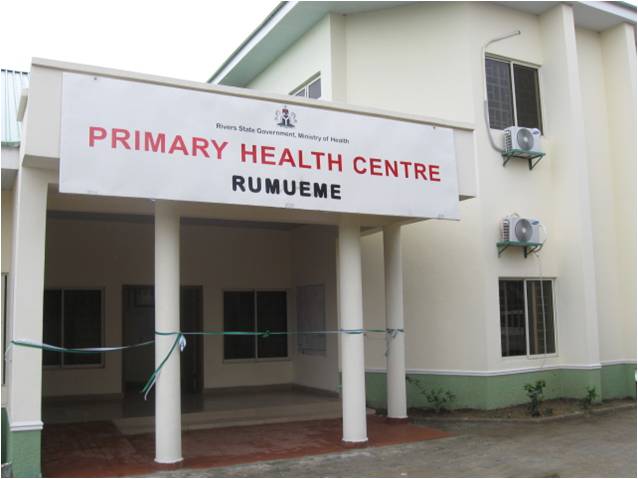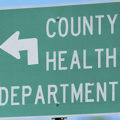The Nigerian health system has been evolving over the years through health care reforms aiming to address the public health challenges confronting it. Even so, the inability to effectively address the country’s numerous public health challenges has contributed to the persistent and high level of poverty and the weakness of the health system. Political instability, corruption, limited institutional capacity, and an unstable economy are major factors responsible for the poor development of health services in Nigeria. Households and individuals in Nigeria bear the burden of a dysfunctional and inequitable health system delaying or not seeking health care and having to pay out of pocket for health care services that are not affordable.
All three tiers of government Federal, State, and Local share responsibilities for providing health services and programs in Nigeria. The Federal Government is largely responsible for providing policy guidance, planning, and technical assistance, coordinating the state-level implementation of the National Health Policy, and establishing health management information systems. In addition, the Federal government is responsible for disease surveillance, drug regulation, vaccine management, and training of health professionals. The Federal Government is also responsible for the management of teaching, psychiatric and orthopedic hospitals and also runs some medical centers.
The responsibility for the management of health facilities and programs is shared by the State Ministries of Health, State Hospital Management Boards, and the Local Government Areas (LGAs). The states operate secondary health facilities (general hospitals) and in some cases tertiary hospitals, as well as some primary health care facilities. The training of nurses, midwives, and health technicians and the provision of technical assistance to local government health programs and facilities.
The National Health Act provides a framework for standards and regulations for health services (the National Health System) which shall
(a) encompass public and private providers of health services;
(b) promote a spirit of cooperation and shared responsibility among all providers of health services in the Federation and any part thereof;
(c) provide for persons living in Nigeria the best possible health services within the limits of available resources;
(d) set out the rights and obligations of healthcare providers, health workers, health establishments, and users; and
(e) protect, promote and fulfill the rights of the people of Nigeria to have access to healthcare services.
Health Insurance in Nigeria
The National Health Insurance Scheme (NHIS) was established under Act 35 of the 1999 Constitution by the Federal Government of Nigeria to improve the health of all Nigerians at an affordable cost. NHIS is to provide social health insurance in Nigeria where health care services of contributors are paid from the common pool of funds contributed by the participants of the Scheme.
It is a pre-payment plan where participants pay a fixed regular amount. The amount/funds are pooled, allowing the Health Maintenance Organizations (HMOs) to pay for those needing medical attention. It is primarily a risk-sharing arrangement that can improve resource mobilization and equity. It is the most widely used form of health care financing worldwide. NHIS also regulates private health Insurance operated by HMOs. HMOs should have a hyperlink to the HMOs list on the site.
The NHIS was expected to provide social and financial risk protection by reducing the cost of health care and providing equitable access to basic health services. The most vulnerable populations in Nigeria include children, pregnant women, people living with disabilities, the elderly, the displaced, the unemployed, retirees, and the sick. Although these vulnerable groups sometimes benefit from free health care services and exemption mechanisms, they largely have to pay for healthcare services. Free health care services and exemption mechanisms are often politically motivated, are poorly implemented, do not become fully operationalized, and sometimes only last a few years. Available statistics have shown that the scheme only covers less than 10 percent of Nigerians. This implies that most of the vulnerable population are left at the pity of health care services which in most cases are not affordable.
Structure Of The Nigerian healthcare system
The structure of the Nigerian healthcare system is organized into primary, secondary, and tertiary healthcare levels. The Local Government Areas (LGAs) are responsible for primary healthcare, the State Governments are responsible for providing secondary care while the Federal Government is responsible for policy development, regulation, overall stewardship, and providing tertiary care. The LGA level is the least funded and organized level of government and therefore has not been able to properly finance and organize primary healthcare, creating a very weak base for the healthcare system.
The burden of disease in Nigeria
Nigeria is one of the developing countries faced with the “double burden” of persisting high prevalence of communicable diseases and rising prevalence of non-communicable diseases. Key health indicators such as maternal and infant mortality are worse than the Sub-Saharan African average and Nigeria is not on track to achieving most of the health-related MDGs.
Malaria is Nigeria’s most important public health challenge and is responsible for 60% of outpatient visits to health facilities in Nigeria, 30% of childhood deaths, and 11% of maternal deaths. Over 90% of Nigerians are at risk of malaria with over 100 million cases per year and about 300,000 deaths. The Federal Ministry of Health estimates a financial loss of approximately USD8.4 million per year.
Healthcare Service Provision In Nigeria
Nigeria has five hospital beds per 10,000 population. The federal ministry of health’s (FMOH) health facilities (HFs) census of 2005 showed that Nigeria had a total of 23,640 public and private hospitals including primary health care centers. A census of private health facilities conducted by USAID in six states (Abia, Benue, Edo, Kaduna, Lagos, and Nasarawa) in April 2014 revealed that approximately 32% of the private health facilities found by surveyors were not included in official government lists, while approximately 53% of the private health facilities included on official government lists could not be found by surveyors. This suggests that lists from government agencies are incomplete and largely inaccurate.
Although recent data on the number and growth rate of hospitals, diagnostic centers, and laboratories are not available, there has been a visible growth in the number of private health facilities in Lagos, Abuja, Port Harcourt, Kano, Enugu, and all the other major cities. The 2008 Demographic and health survey showed that the private sector provides over 65% of healthcare services. This is even more for the poorest quintile at 72%. Among the private sector providers, pharmacies and patent medicine vendors (PMVs) play a critical role. Pharmacies and PMVs provided 39% of the services to children with fever in 2008, compared to public clinics at 37%, private clinics at 13%, and shops at 7%. SEE: Equity Vs Equality: Understanding The Difference





